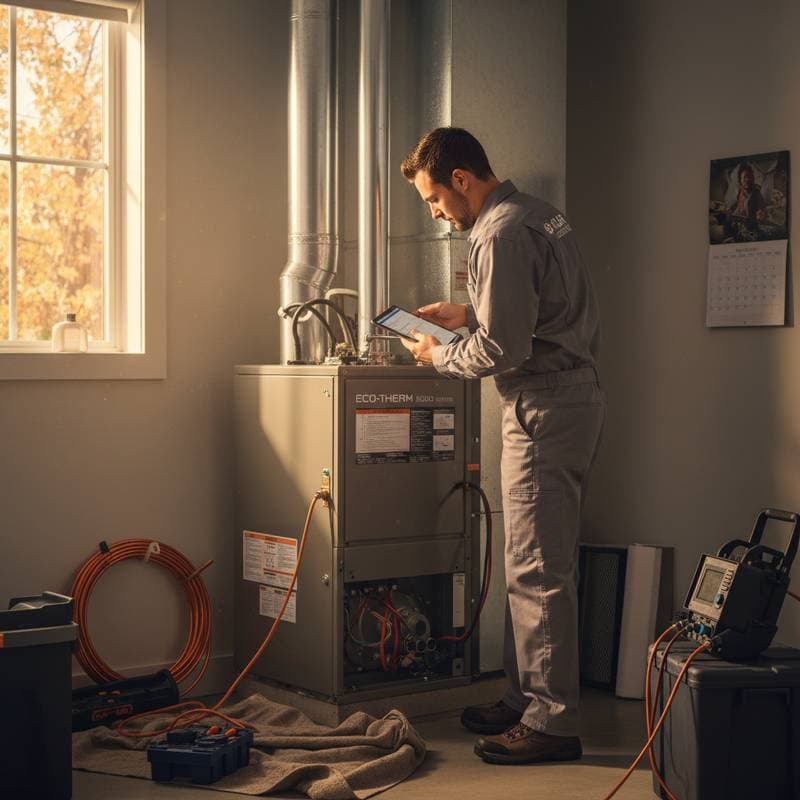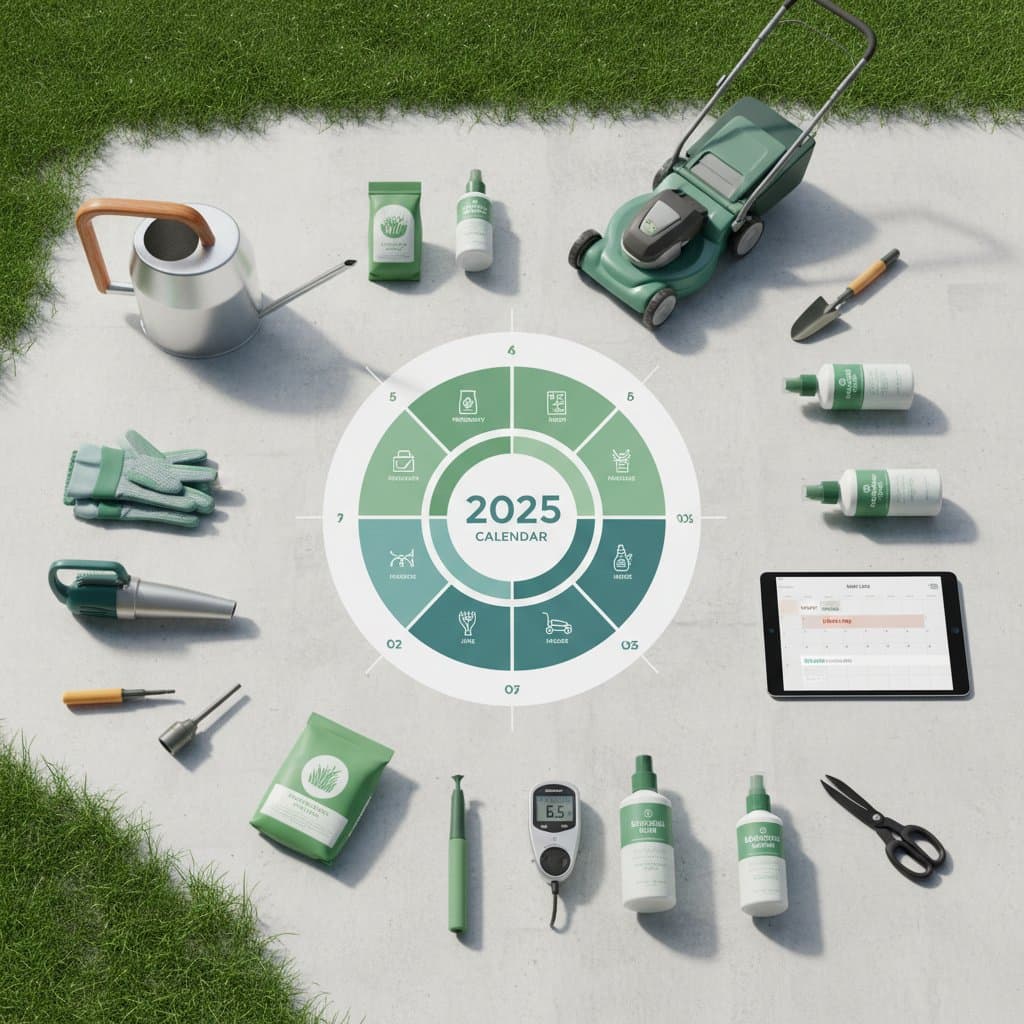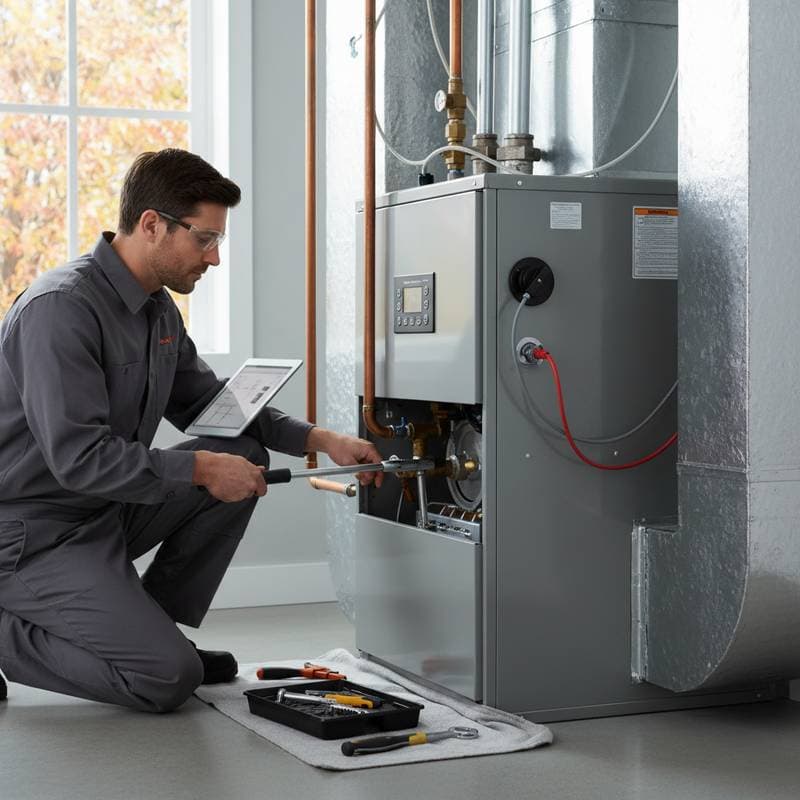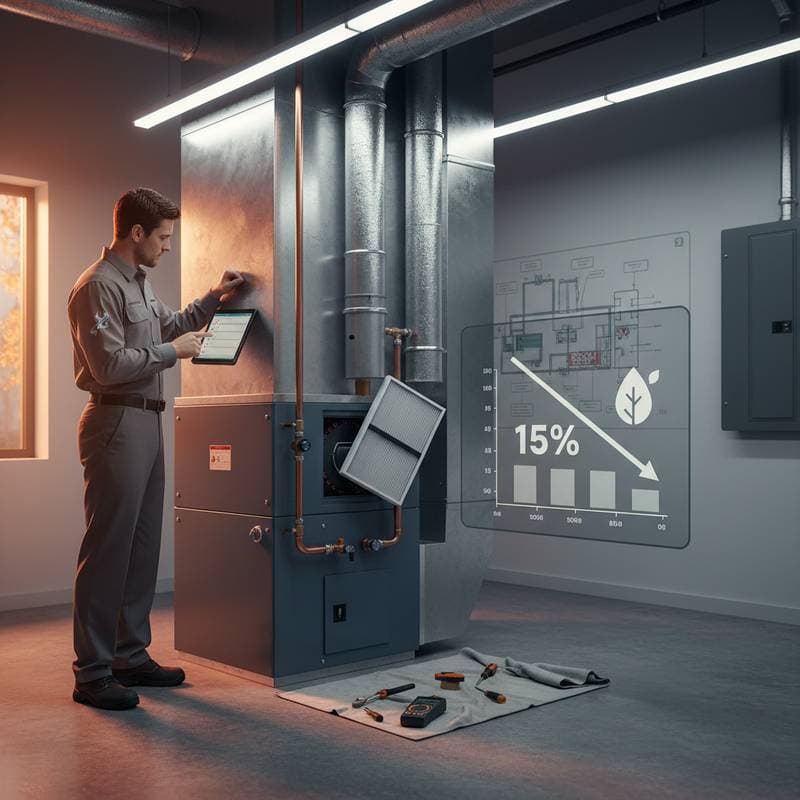The Pre-Season AC Tune-Up That Prevents Summer Woes
A quiet hum from the air conditioner provides comfort as temperatures rise. However, an unresponsive system on a hot afternoon disrupts that ease. A pre-season AC tune-up offers the most straightforward method to avoid such issues. This maintenance prevents unexpected breakdowns, enhances efficiency, and maintains home comfort during peak demand.
Why Pre-Season Maintenance Matters
Air conditioners face maximum stress on the hottest days, which coincides with peak failure rates. Compressors, fans, and refrigerant lines endure gradual wear from accumulated dust, pollen, and moisture. These elements reduce airflow and compel the system to operate longer for equivalent cooling. A tune-up prior to summer equips the unit for optimal performance.
The Quick Answer
Arrange the tune-up before the initial heat wave arrives. A professional inspection encompasses coil cleaning, electrical connection tightening, refrigerant pressure verification, thermostat testing, and condensate line clearance. Homeowners who adhere to this annual practice typically experience energy bills reduced by 10 to 15 percent, along with fewer urgent repair requests.
Step-by-Step: What an AC Tune-Up Includes
A comprehensive air conditioning tune-up extends beyond surface cleaning of the outdoor unit. Each procedure targets elements of system efficiency and durability.
1. Cleaning the Condenser Coils
The outdoor condenser coil dissipates heat extracted from the indoor space. Clogged fins from dirt or debris impair heat transfer. Technicians apply coil cleaner followed by a low-pressure hose rinse to eliminate accumulation. For basic upkeep, homeowners may perform a gentle cleaning by powering off the unit, accessing the top panel, and directing water flow inward to outward. Maintain a minimum 24-inch clearance around the unit to facilitate airflow.
2. Checking the Refrigerant Level
Insufficient refrigerant frequently indicates a leak. Technicians employ gauges to assess pressure against manufacturer guidelines, typically 60 to 80 psi on the low side for standard residential systems. Proper levels ensure effective cooling and protect the compressor from damage.
3. Inspecting the Electrical Components
Loose wiring and corroded contacts contribute to numerous summer failures. Technicians secure terminal screws, evaluate capacitors, and examine the contactor for deterioration. Neglected components can result in total system shutdown.
4. Flushing the Condensate Drain
The condensate line expels moisture from the evaporator coil. Blockages lead to backups that activate safety switches or cause water intrusion. Technicians flush the line with a solution of warm water and white vinegar. Verify a steady outdoor drip during operation to confirm functionality.
5. Testing the Thermostat and Airflow
Technicians confirm the thermostat registers accurate room temperatures and cycles the system appropriately. Supply vent airflow should register 350 to 400 cubic feet per minute per ton of cooling capacity. Disparities suggest duct leaks or filter obstructions.
Common Mistakes Homeowners Make
Careful homeowners occasionally miss details that escalate into significant expenses. Addressing these errors promotes system longevity.
- Skipping filter changes: Restricted airflow from dirty filters strains the blower motor. Exchange filters every one to three months based on usage intensity.
- Ignoring strange noises: Squeals or rattles indicate loose blades or belts. Prompt inspection averts major overhauls.
- Blocking vents: Ensure 10 inches of unobstructed space around supply and return vents for even distribution.
- Delaying maintenance: Postponing service until heat arrives extends wait times and inflates costs.
Cost and Value Breakdown
Professional AC tune-ups range from 90 to 180 dollars, varying by system capacity and regional rates. This investment yields returns via heightened efficiency. A soiled coil diminishes cooling by up to 30 percent, elevating electricity costs. Early detection of leaks or faulty electrics avoids repairs priced at 600 to 1,500 dollars.
DIY vs. Professional Service
Homeowners can manage select tasks independently:
- Regularly replace or clean air filters.
- Remove debris from the outdoor unit.
- Rinse condenser fins with low-pressure water.
Electrical diagnostics, refrigerant adjustments, and internal inspections require certified HVAC expertise. Professionals utilize precise instruments for superheat, subcooling, and voltage assessments. Such service preserves warranty validity on covered systems.
Preparing for the Technician's Visit
Preparation streamlines the inspection and enhances outcomes. Follow these steps:
- Clear surroundings of indoor and outdoor units.
- Test thermostat responsiveness.
- Document observed issues like inconsistent cooling or odd sounds.
- Gather maintenance logs for performance trend analysis.
These actions typically limit the visit to one hour, providing a thorough system evaluation.
Accessibility and Comfort Considerations
Households with mobility limitations or respiratory concerns benefit greatly from reliable AC function. Inadequate airflow and unclean filters degrade air quality. Implement these enhancements:
- Select filters with MERV ratings of 8 to 13 to trap dust and allergens effectively.
- Position supply vents at least 15 inches above the floor to minimize drafts.
- Employ programmable thermostats or smart sensors for steady temperature control.
Such measures optimize efficiency and enhance overall home comfort.
Signs Your AC Needs More Than a Tune-Up
Tune-ups may reveal underlying issues requiring further attention. Note these technician observations:
- Refrigerant leaks in coils or lines.
- Compressor short cycling from electrical issues.
- Severe corrosion on coils or enclosures.
- Elevated amperage on fan motors.
For systems over 10 years old with recurrent repairs, consider replacement. Modern high-efficiency units consume up to 40 percent less energy and often secure utility incentives.
Tools and Supplies for Light DIY Maintenance
Proactive homeowners benefit from these essentials for interim care:
- Fin comb to realign bent condenser fins.
- Coil cleaner formulated for aluminum surfaces.
- Shop vacuum with crevice tool for base debris removal.
- Small level to verify outdoor pad stability.
- Non-contact voltage tester for safety confirmation.
These items support safe, effective maintenance between expert services.
Preventive Care Schedule
Adhere to these National HVAC guidelines for sustained reliability:
| Task | Frequency | DIY or Professional |
|---|---|---|
| Replace air filter | Every 1 to 3 months | DIY |
| Clean outdoor coil | Once per season | DIY or Pro |
| Full system inspection | Once per year | Professional |
| Ductwork inspection | Every 2 to 3 years | Professional |
| Thermostat calibration | Once per year | Professional |
This regimen prolongs equipment life, stabilizes energy consumption, and minimizes seasonal disruptions.
Securing Year-Round Comfort Through Proactive Care
Pre-season AC tune-ups represent essential habits with substantial benefits. They eliminate the urgency of emergency calls during heat peaks and promote energy conservation. Balance personal maintenance with professional interventions for refrigerant and electrical needs. Consistent attention safeguards this vital home asset, delivering reliable cooling, reduced expenses, and assured tranquility.





